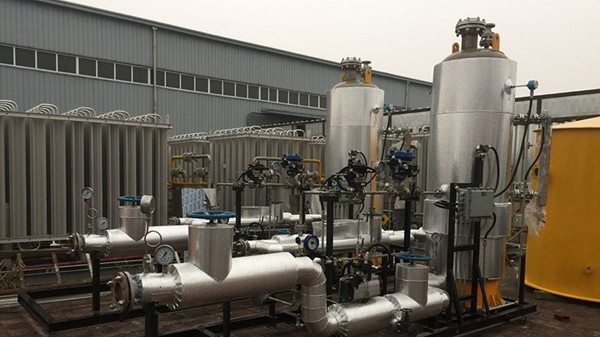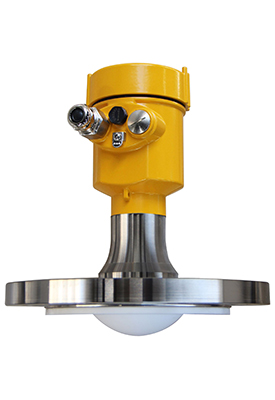In the chemical production process, the liquid level measurement of the ammonia separator is a vital task. It is directly related to the stability and safety of the production process and the quality of the final product.
The ammonia separator is usually used to separate ammonia from water. This process requires precise control of the liquid level to avoid gas escape or excessive liquid, which may cause environmental pollution or reduced production efficiency.
In recent years, radar level meters have become an ideal choice for liquid level measurement in ammonia separators due to their high precision and non-contact measurement characteristics.

The main features of the ammonia separator include its relatively simple structure, convenient operation and ability to adapt to high temperature and high pressure working environments.
Since it involves two-phase fluids of ammonia and water, there are significant differences in their dielectric constants, which provides a physical basis for the application of radar level meters.
Radar level meters measure liquid levels by emitting microwave signals and receiving their reflected waves. Different media have different reflectivities to microwaves, so the liquid level can be accurately measured.

In an actual case of a chemical plant, the ammonia separator of the plant originally used a float-type level gauge for level measurement, but problems such as jamming and maintenance difficulties often occurred, which seriously affected the continuity of production and the accuracy of level control. In order to solve this problem, the factory decided to introduce a radar level gauge for technical transformation.
A high-frequency radar level gauge was selected. This type of radar level gauge has high-frequency microwave transmission capability and can more finely distinguish media with different dielectric constants.
It is suitable for the interface measurement of ammonia and water in the ammonia separator. During the installation process, the original float-type level gauge was first dismantled, and a radar level gauge was installed on the top of the ammonia separator.
The choice of installation location fully considered the influence of factors such as bubbles and scaling on microwave transmission. After the installation was completed, the radar level gauge was calibrated and tested.
The test results showed that the measurement accuracy of the radar level gauge was much higher than that of the float-type level gauge used before.
In actual operation, the radar level gauge showed extremely high stability and reliability, realizing real-time and continuous monitoring of the liquid level of the ammonia separator.
After using it for a period of time, the factory found that the radar level meter not only improved the measurement accuracy, but also greatly reduced the maintenance workload.
Because the radar level meter uses non-contact measurement, it avoids the corrosion and blockage problems that are prone to occur in traditional contact instruments, reduces equipment downtime, and improves production efficiency.

In summary, the application of radar level meter in ammonia separator not only solves the problems of traditional level measurement methods, but also improves the accuracy of measurement and the stability of equipment.
The successful application of this technology provides a useful reference for level measurement in similar occasions in the chemical industry, and is one of the indispensable technical equipment in modern chemical production.
